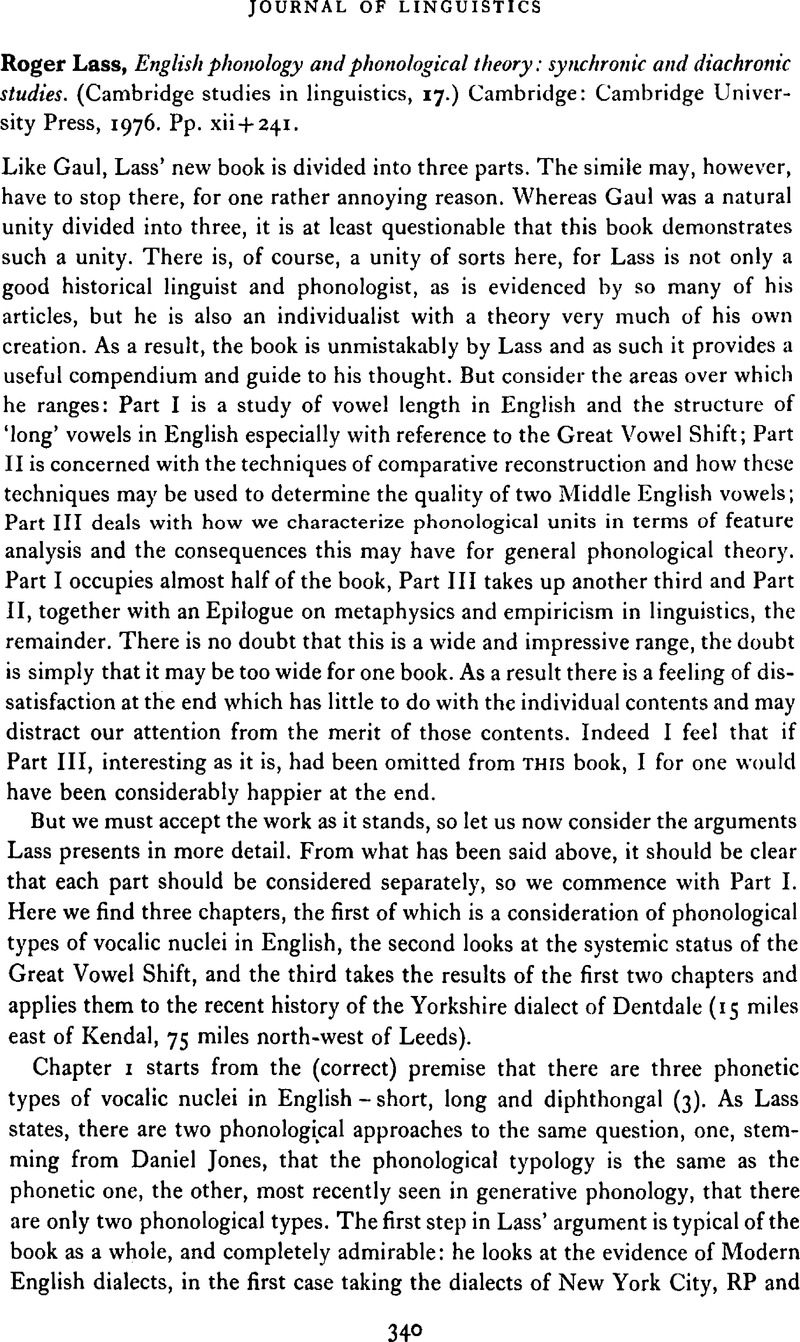No CrossRef data available.
Article contents
Roger Lass, English phonology and phonological theory: synchronic and diachronic studies. (Cambridge studies in linguistics, 17.) Cambridge: Cambridge University Press, 1976. Pp. xii + 241.
Review products
Roger Lass, English phonology and phonological theory: synchronic and diachronic studies. (Cambridge studies in linguistics, 17.) Cambridge: Cambridge University Press, 1976. Pp. xii + 241.
Published online by Cambridge University Press: 28 November 2008
Abstract
An abstract is not available for this content so a preview has been provided. Please use the Get access link above for information on how to access this content.

- Type
- Reviews
- Information
- Copyright
- Copyright © Cambridge University Press 1977
References
REFERENCES
Carter, R. (1975). Some theoretical implications of the Great Vowel Shift. In Goyvaerts, D. L. & Pullum, G. K. (eds), Essays on the sound pattern of English. Ghent: Story-Scientia. 369–376.CrossRefGoogle Scholar
Dobson, E. J. (1968). English pronunciation 1500–1700. 2nd ed. Oxford: Clarendon Press.Google Scholar
Hogg, R. M. (1976). Review of Lass & Anderson, 1975. York Papers in Linguistics 6. 187–193.Google Scholar
Ladefoged, P. (1971). Preliminaries to linguistic phonetics. Chicago: University of Chicago Press.Google Scholar
Lass, R. & Anderson, J. M. (1975). Old English phonology. Cambridge: Cambridge University Press.Google Scholar


